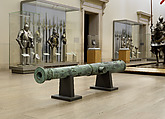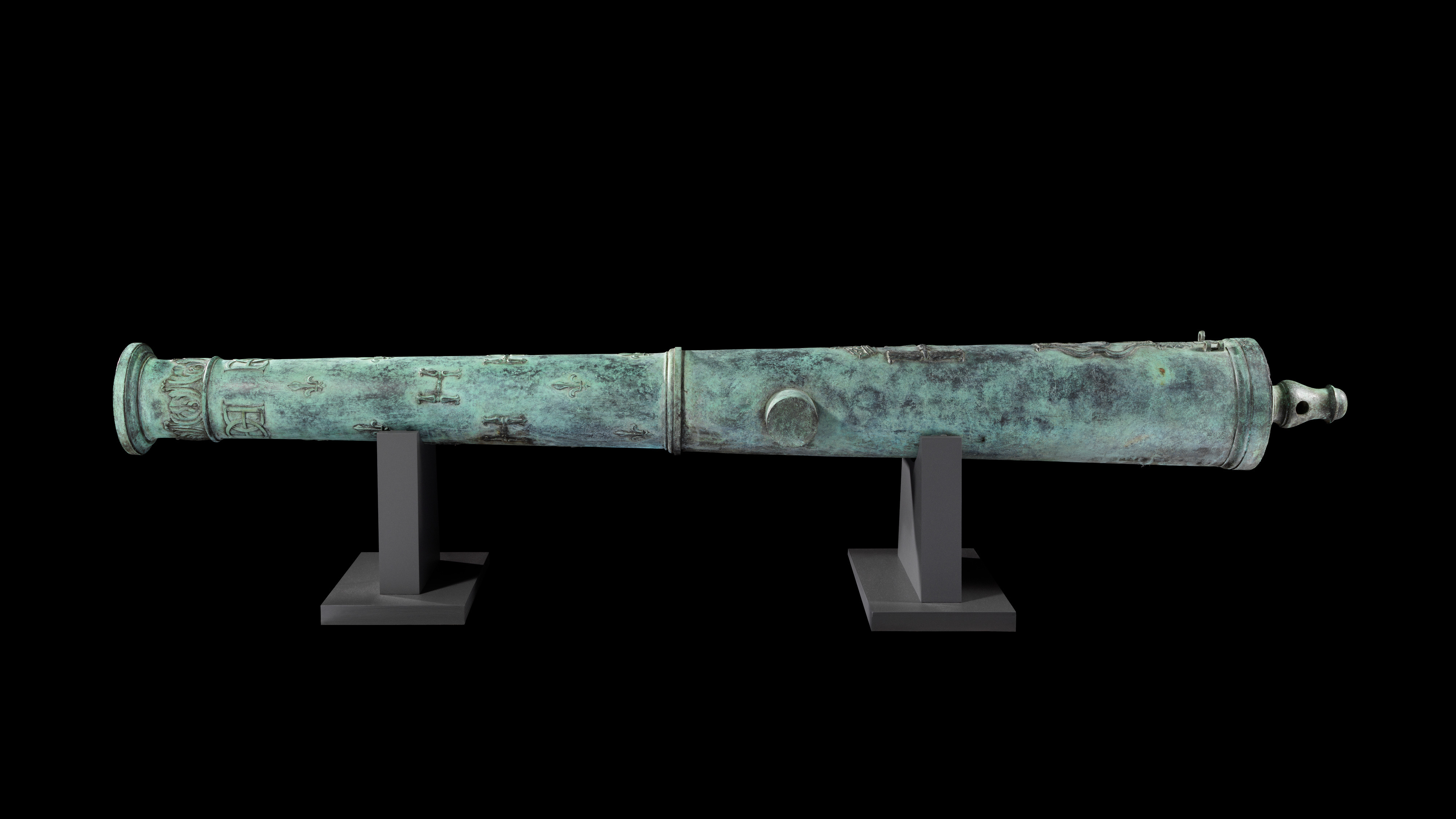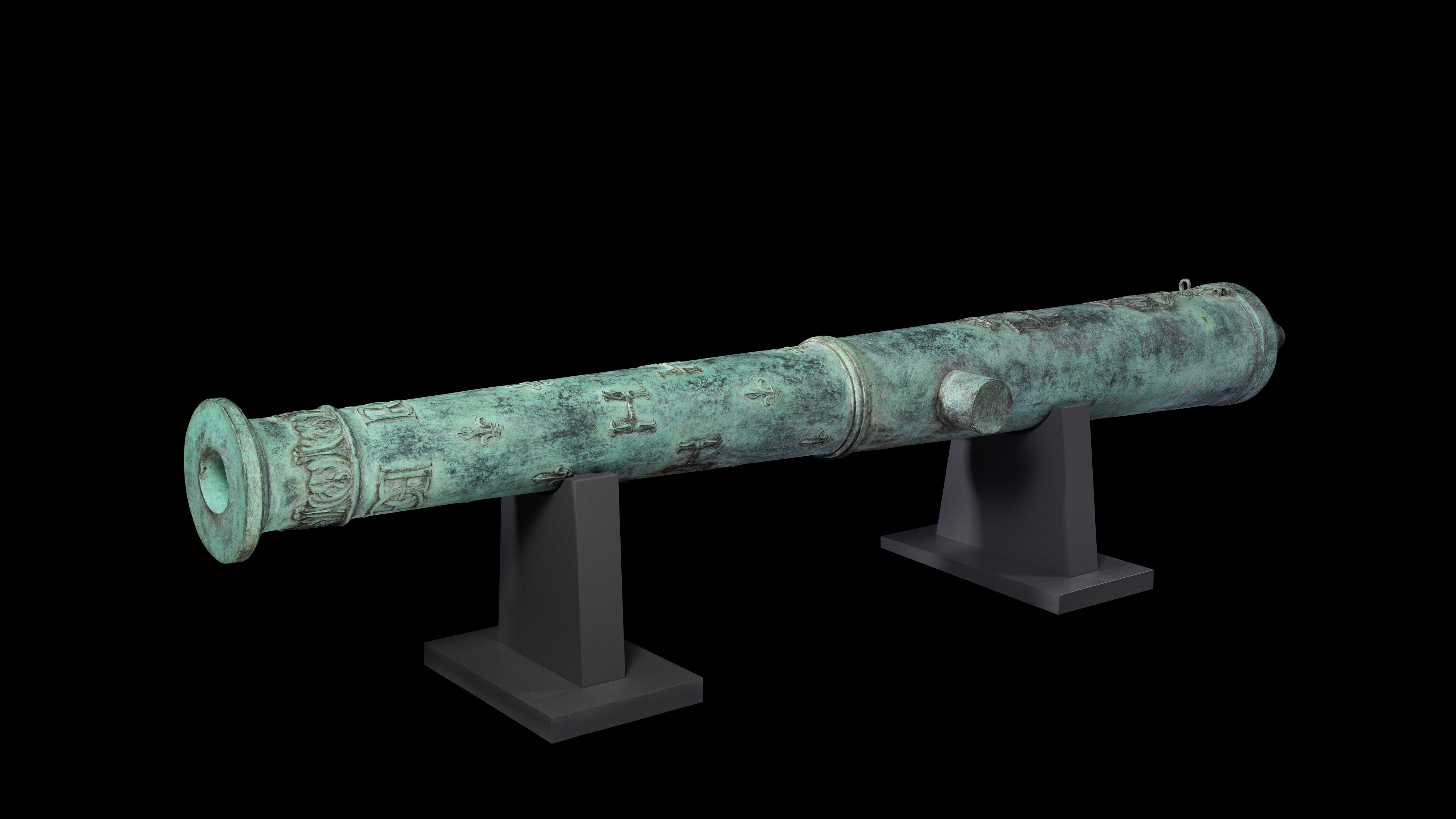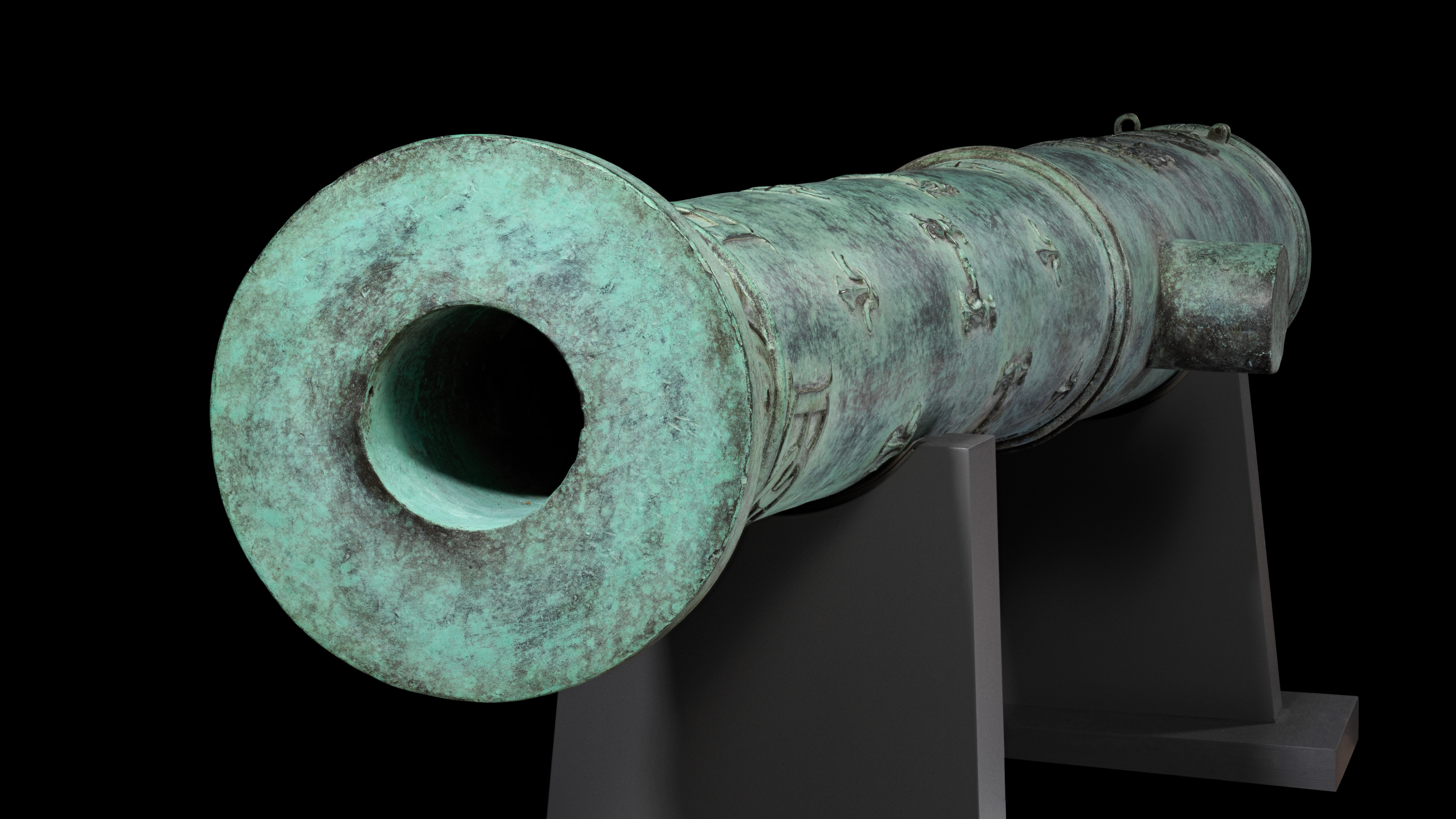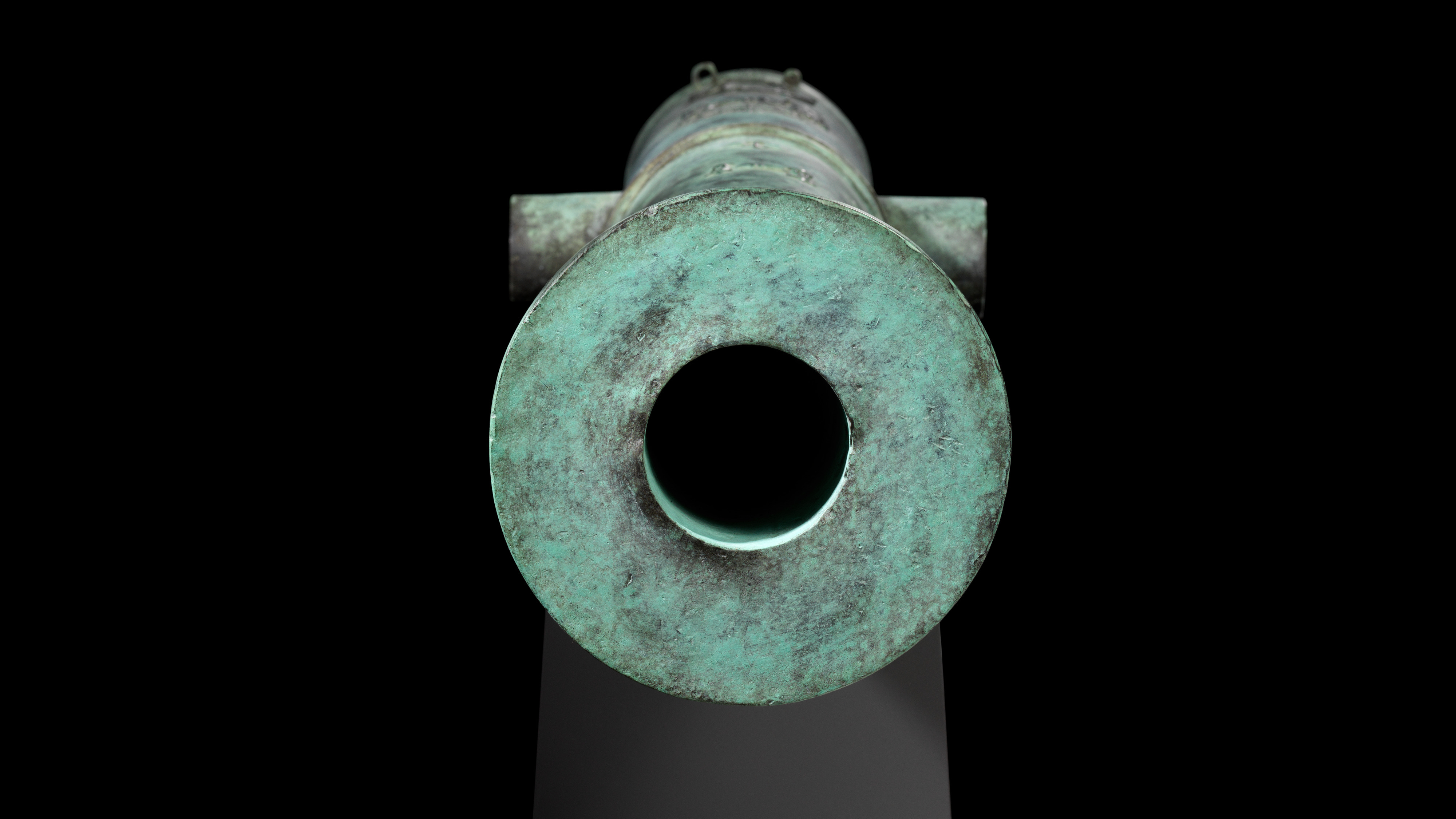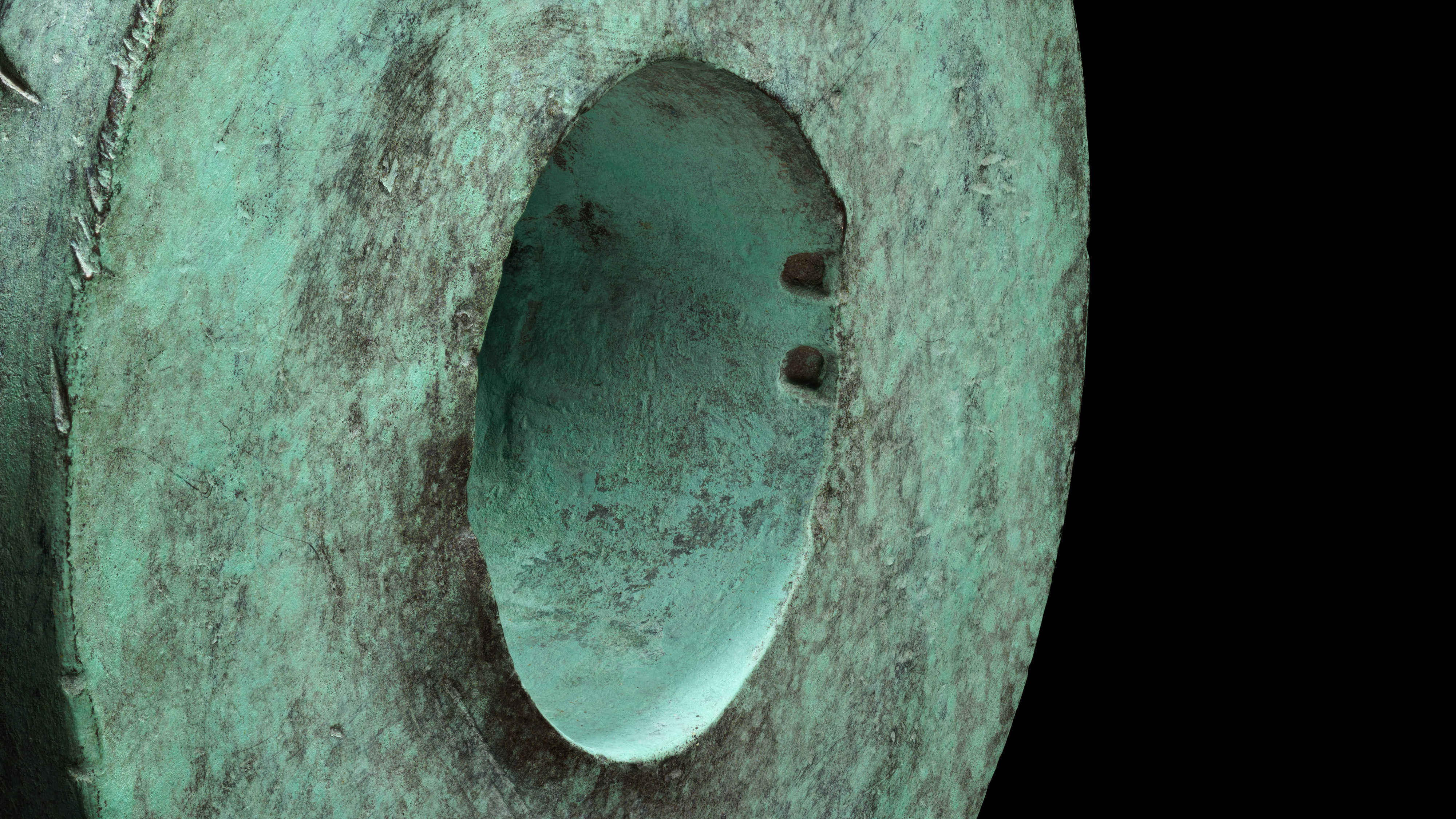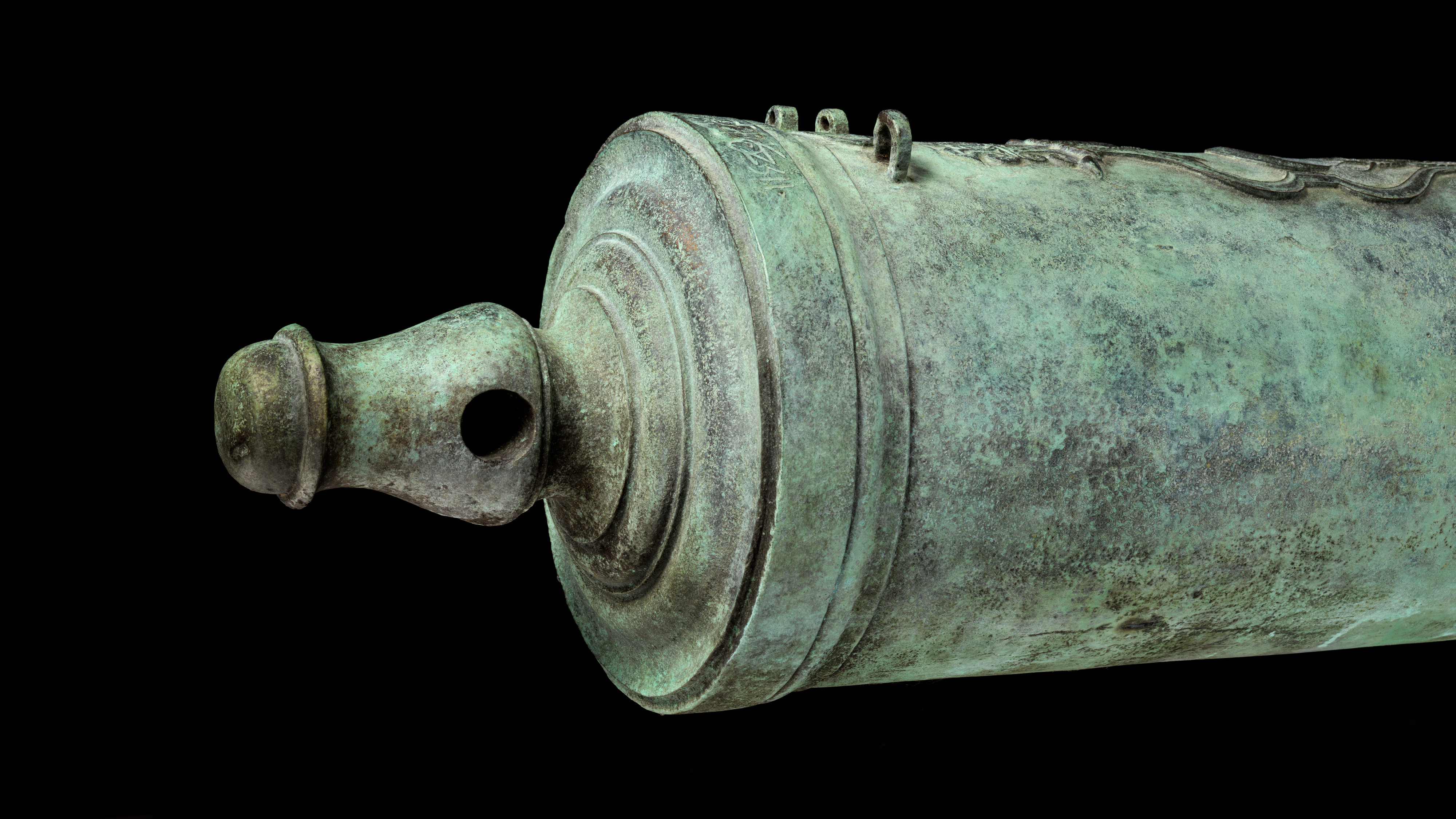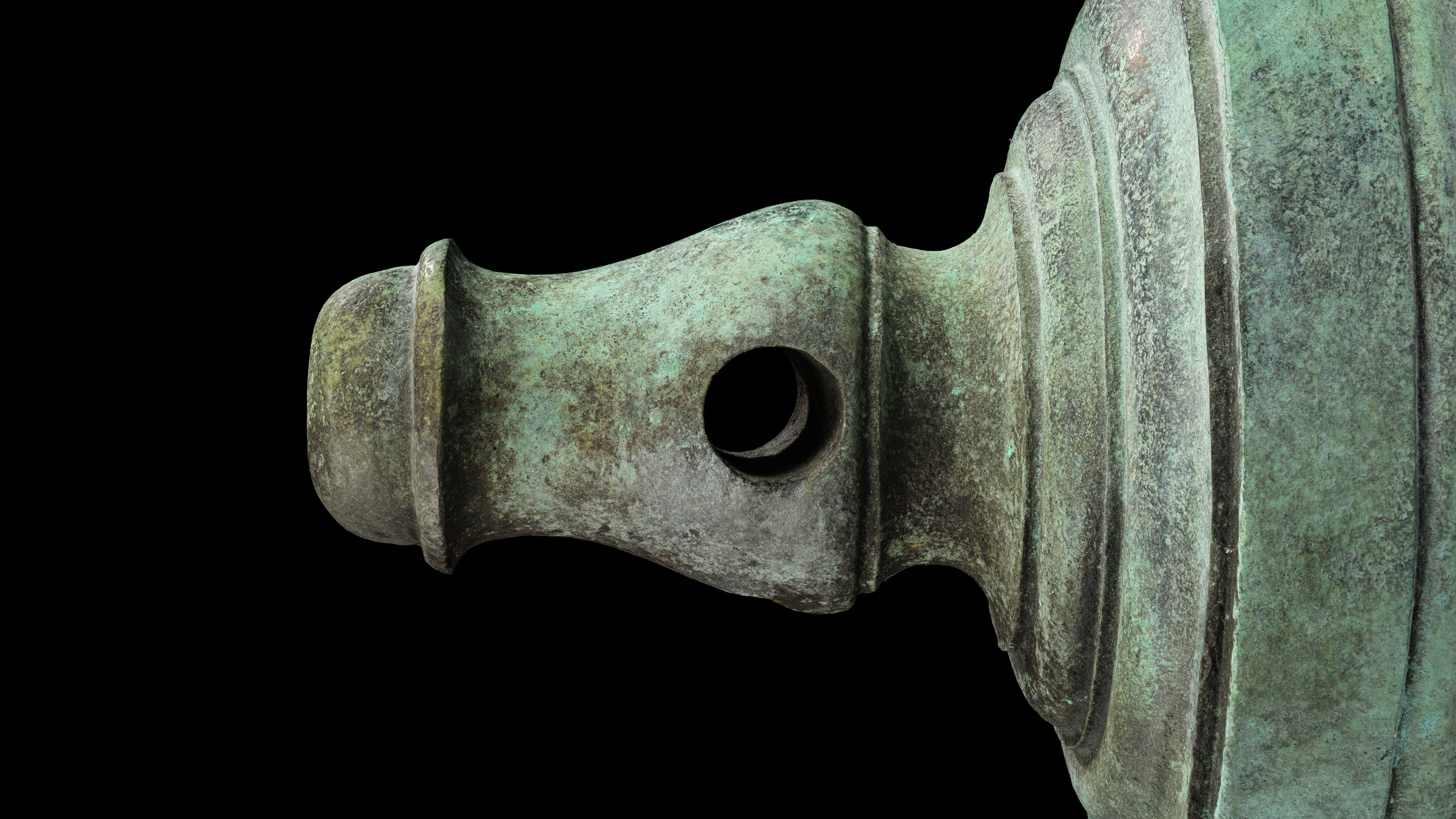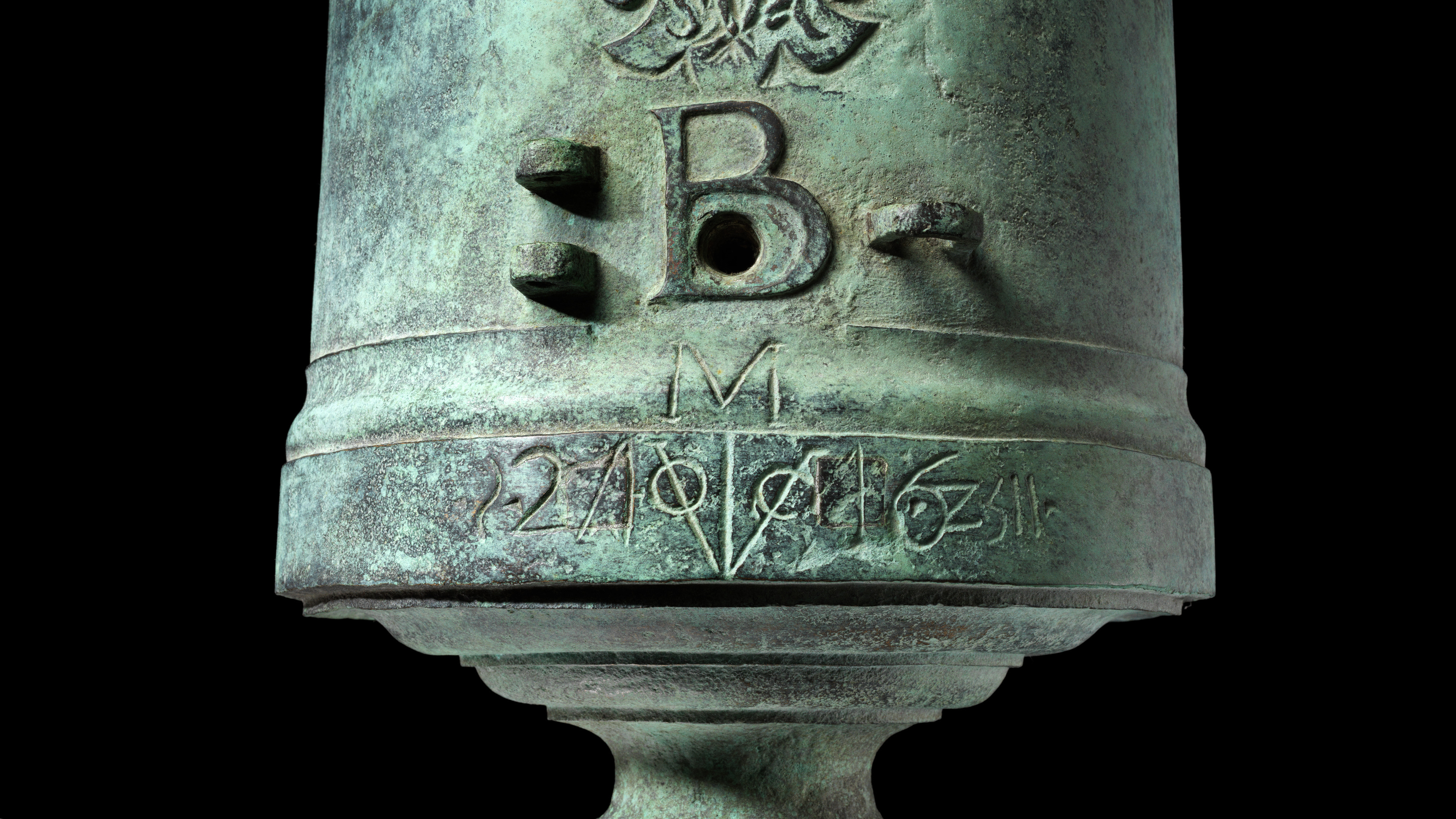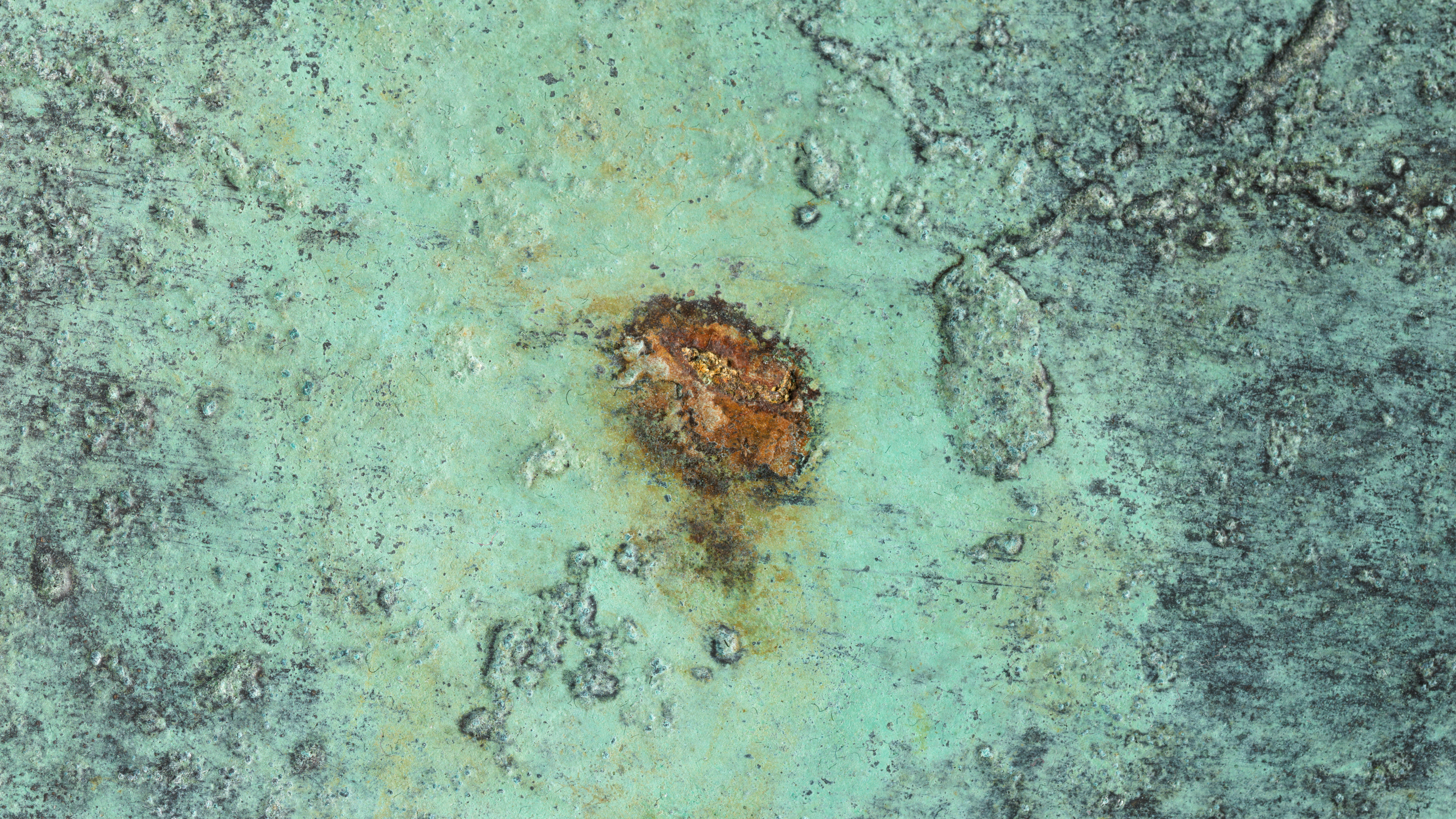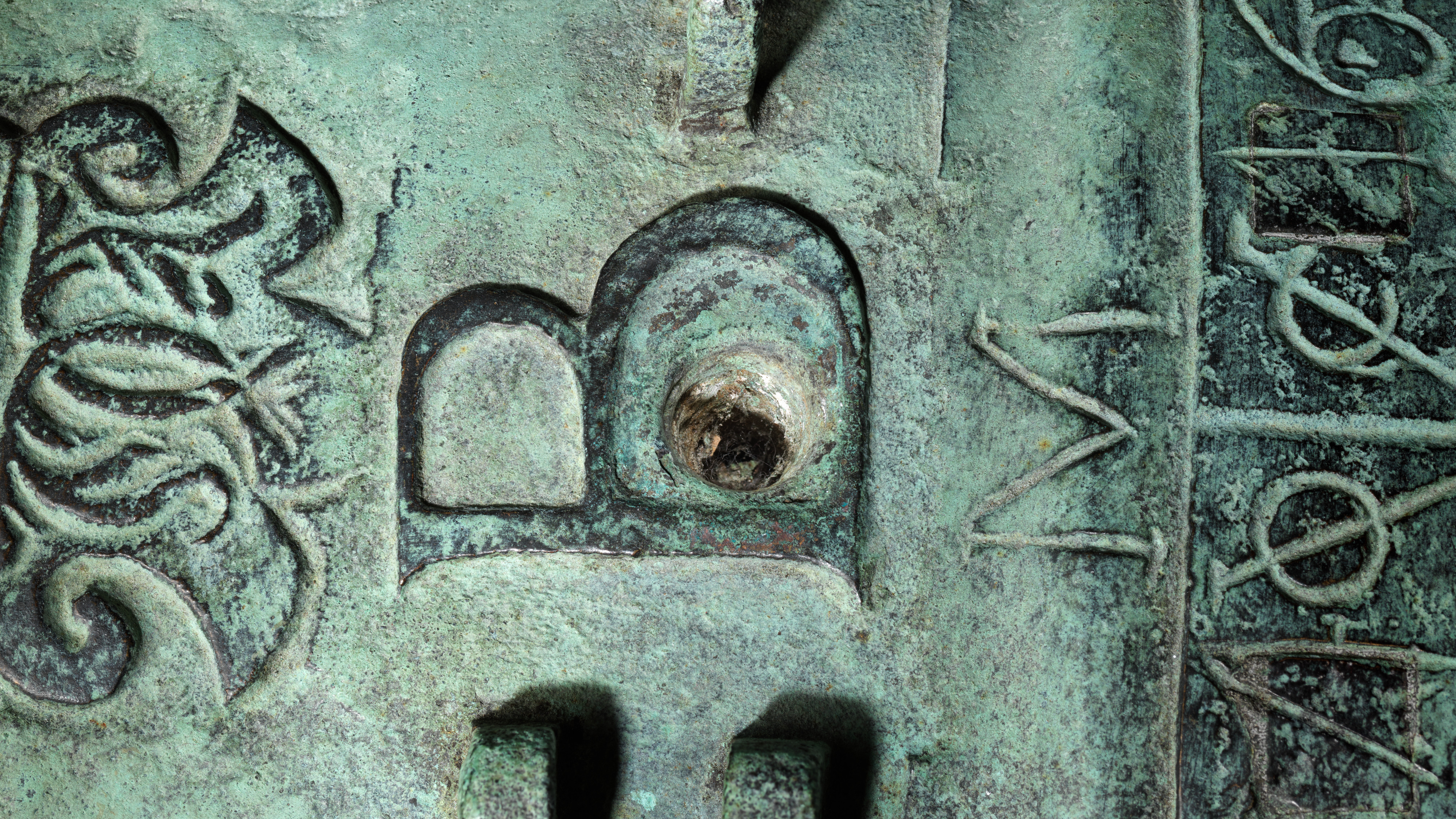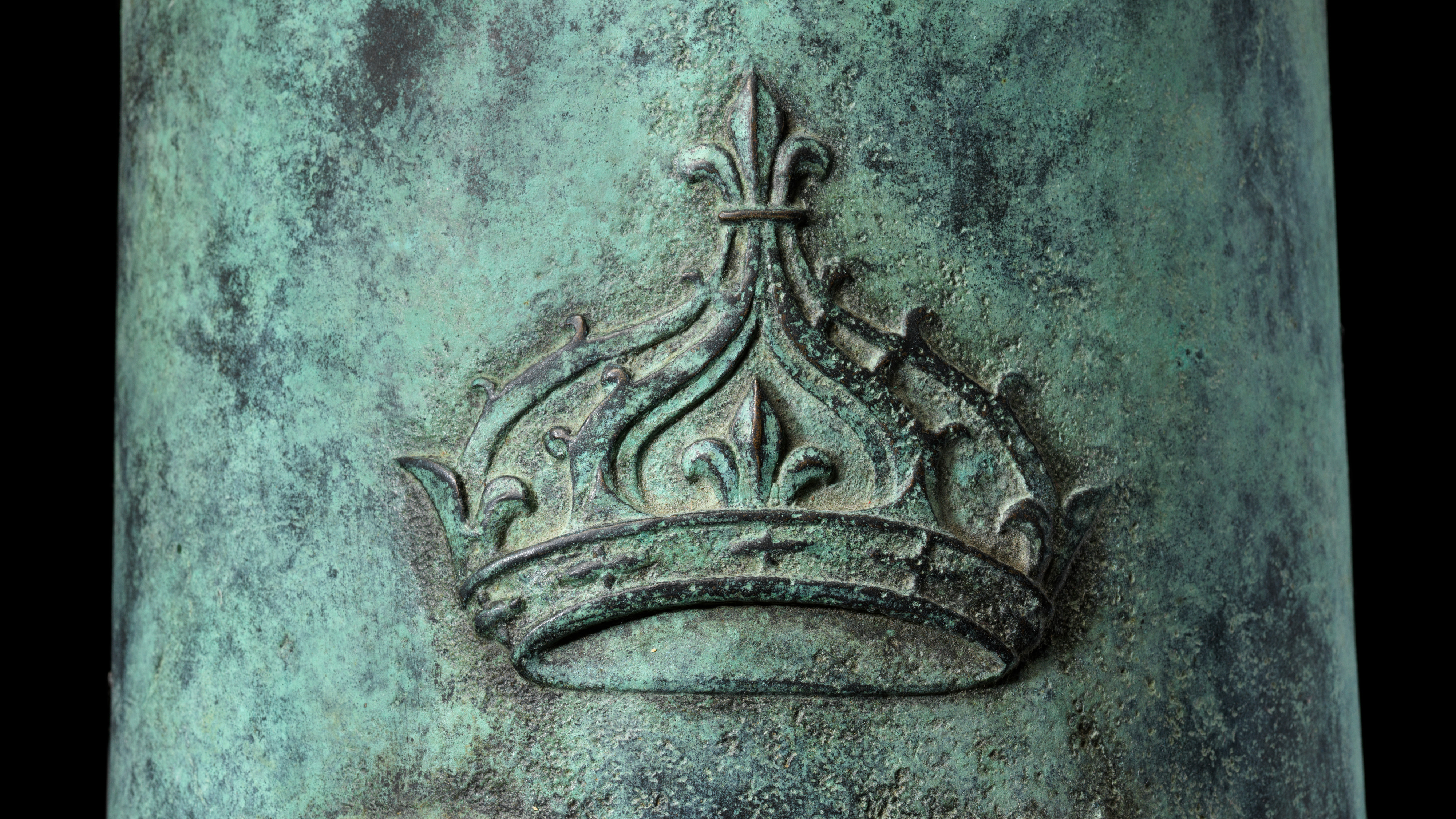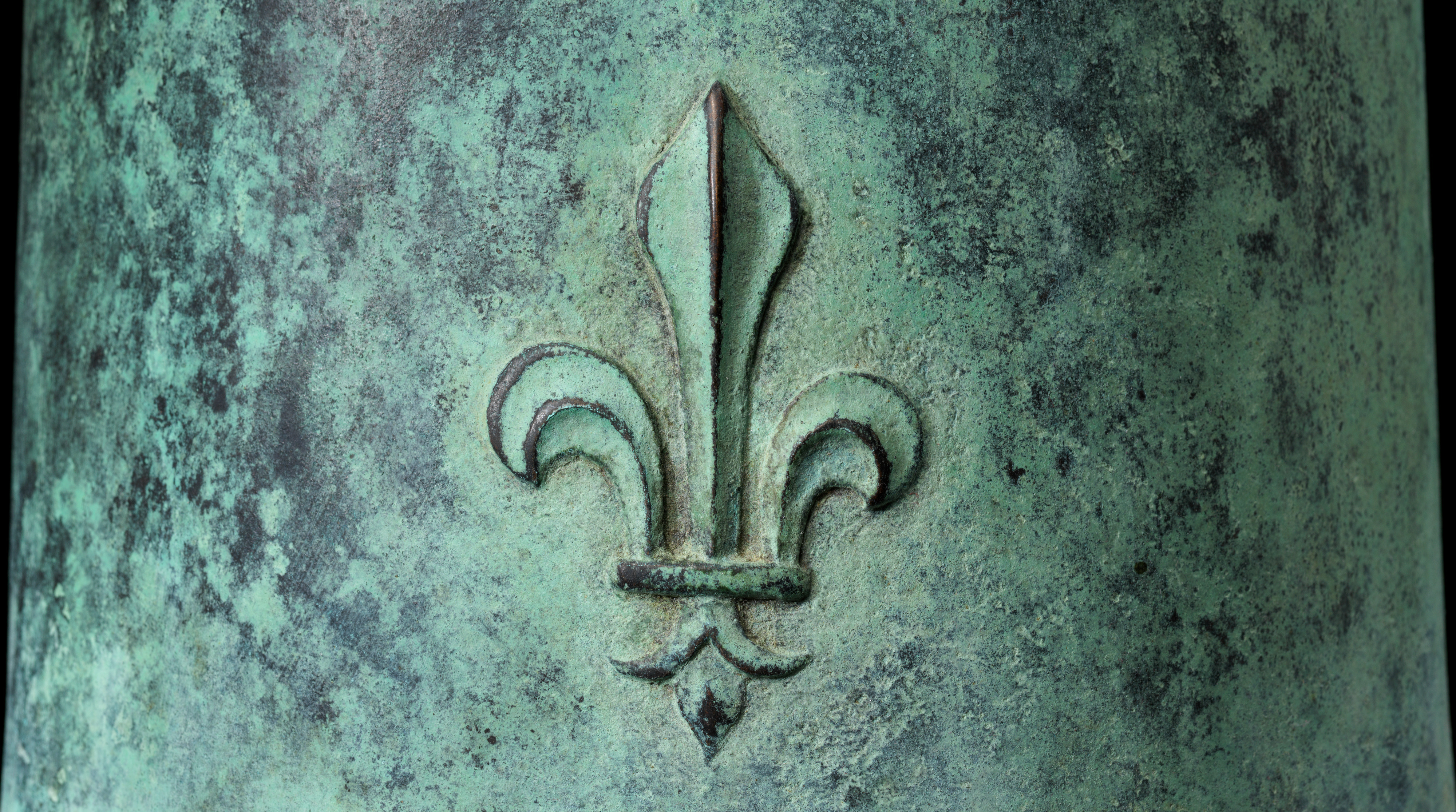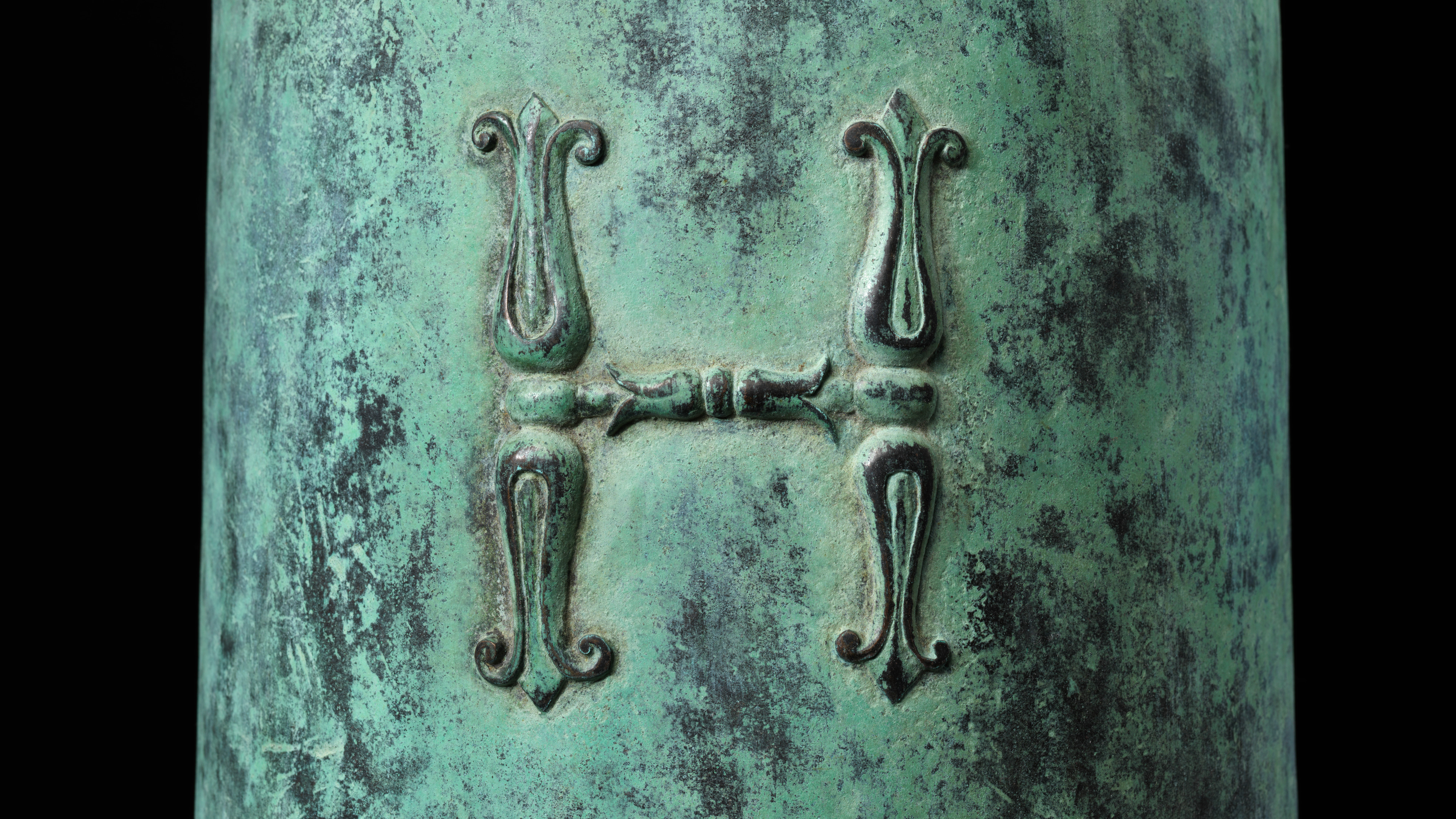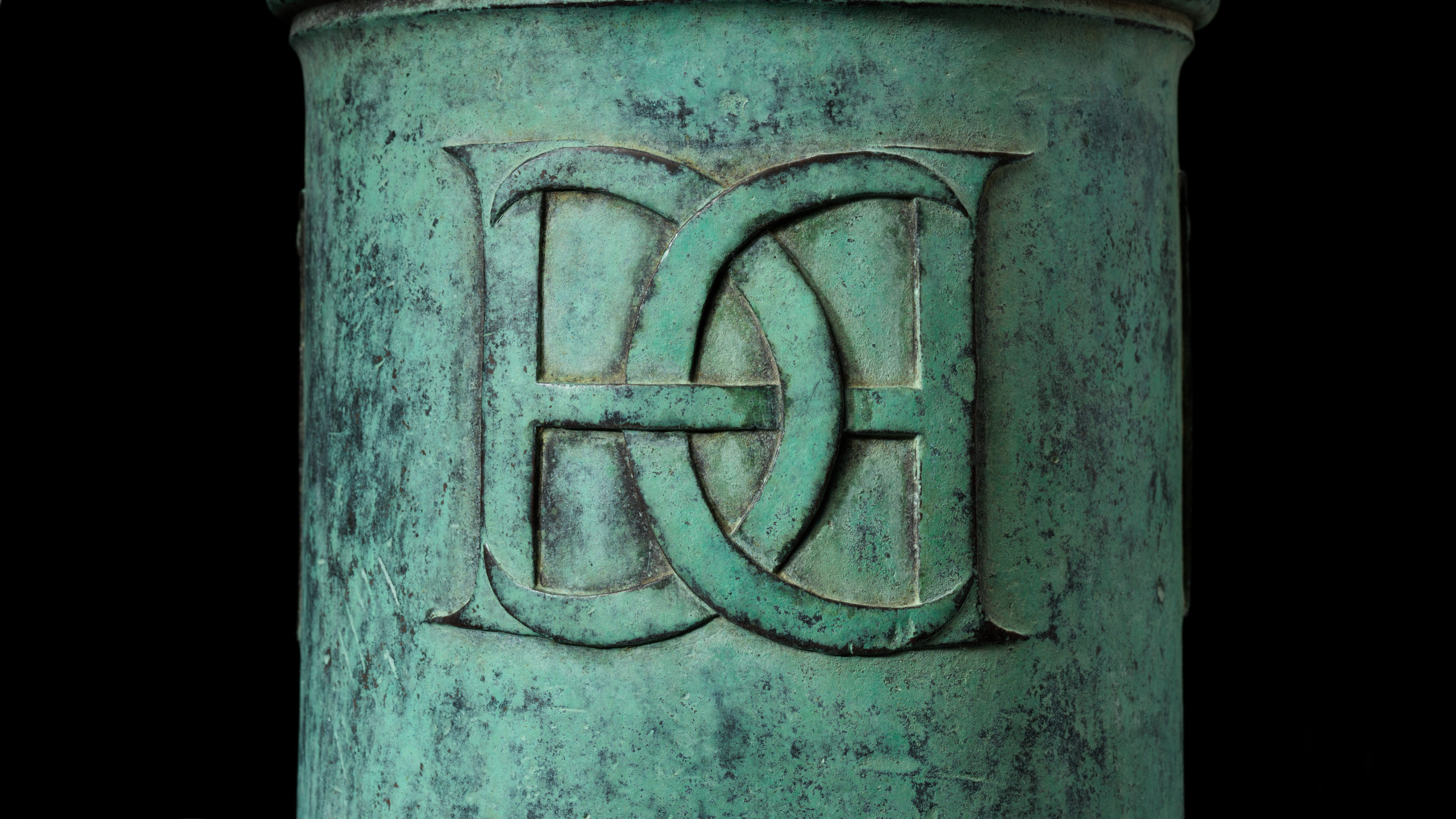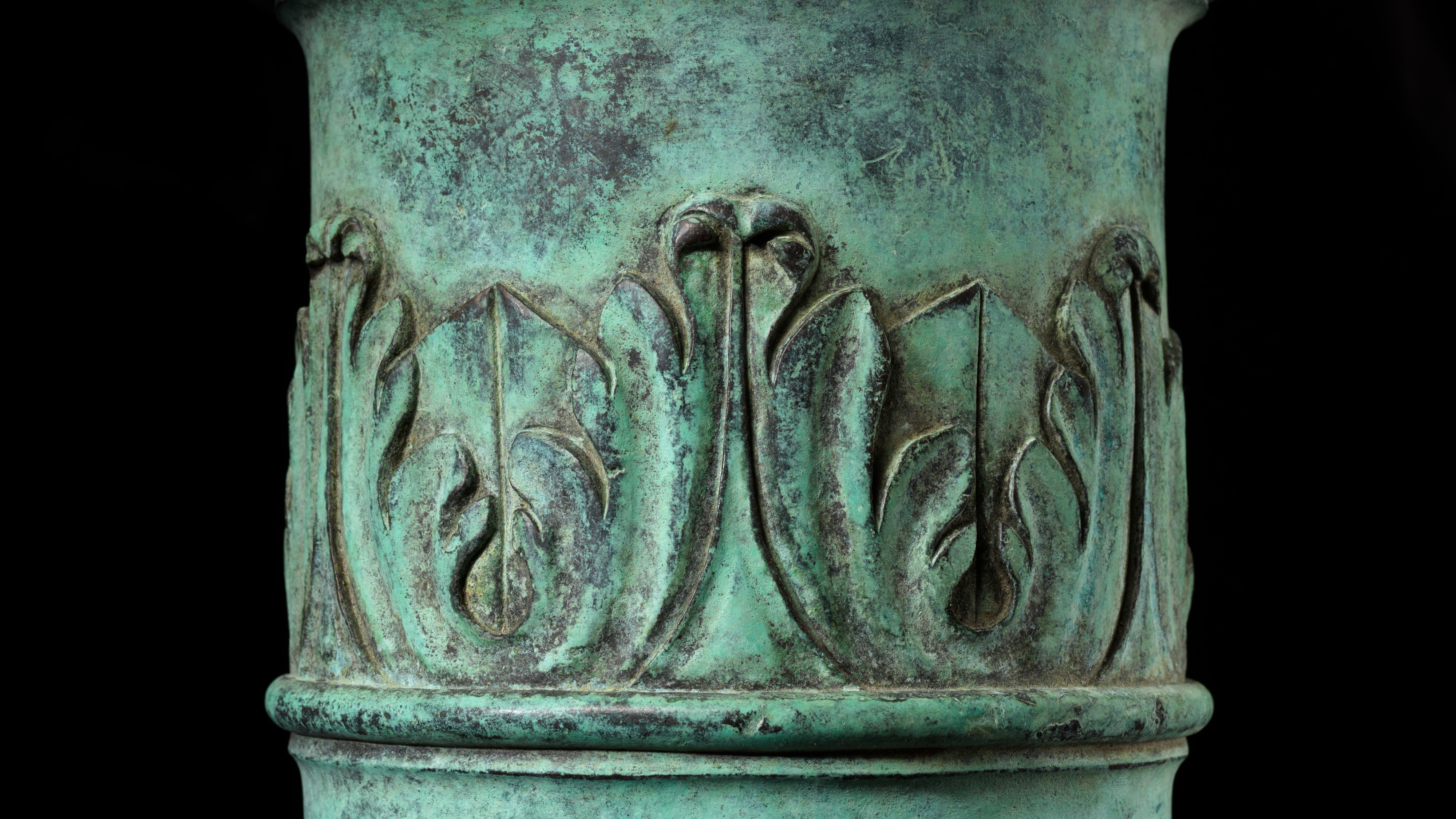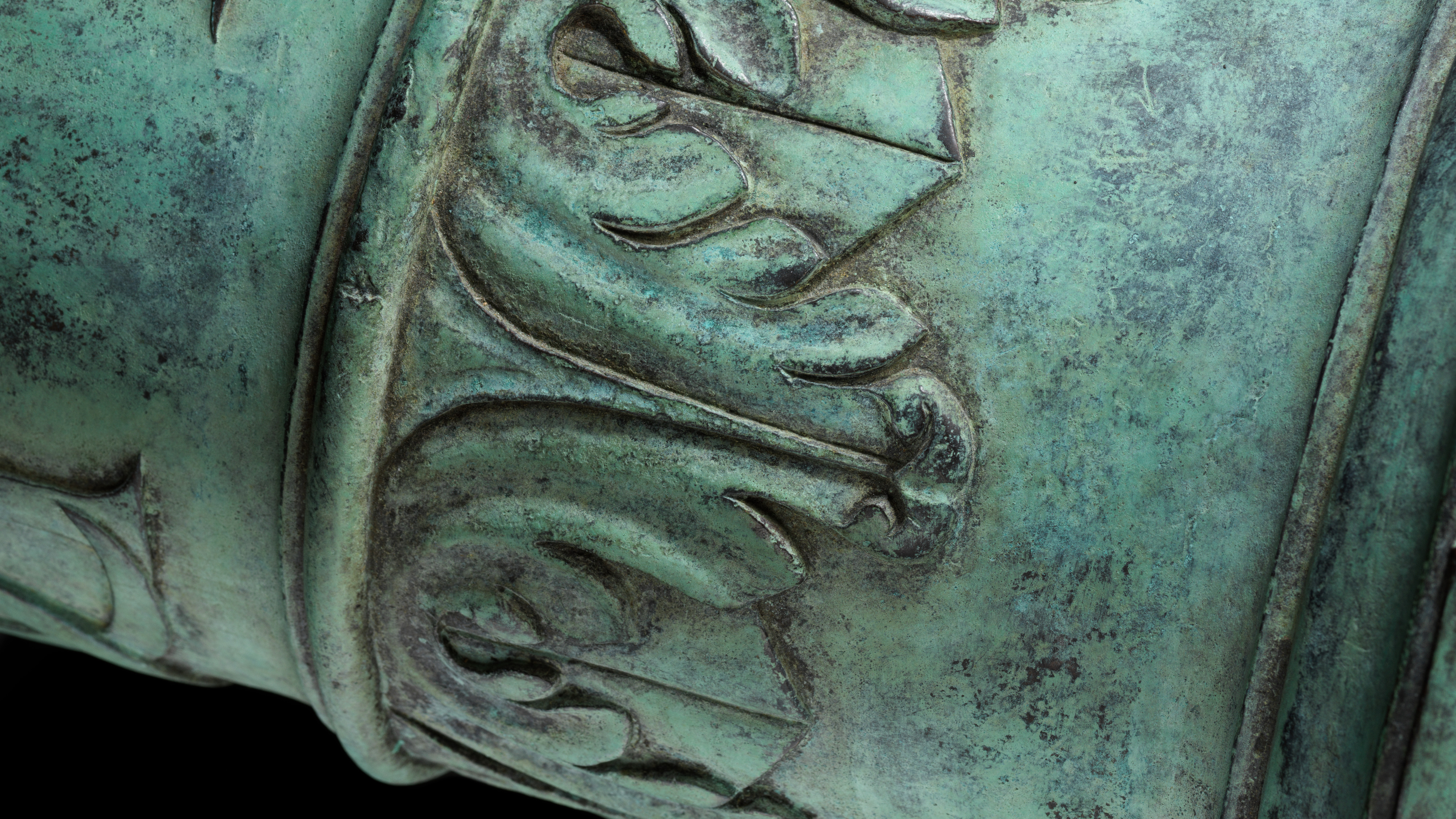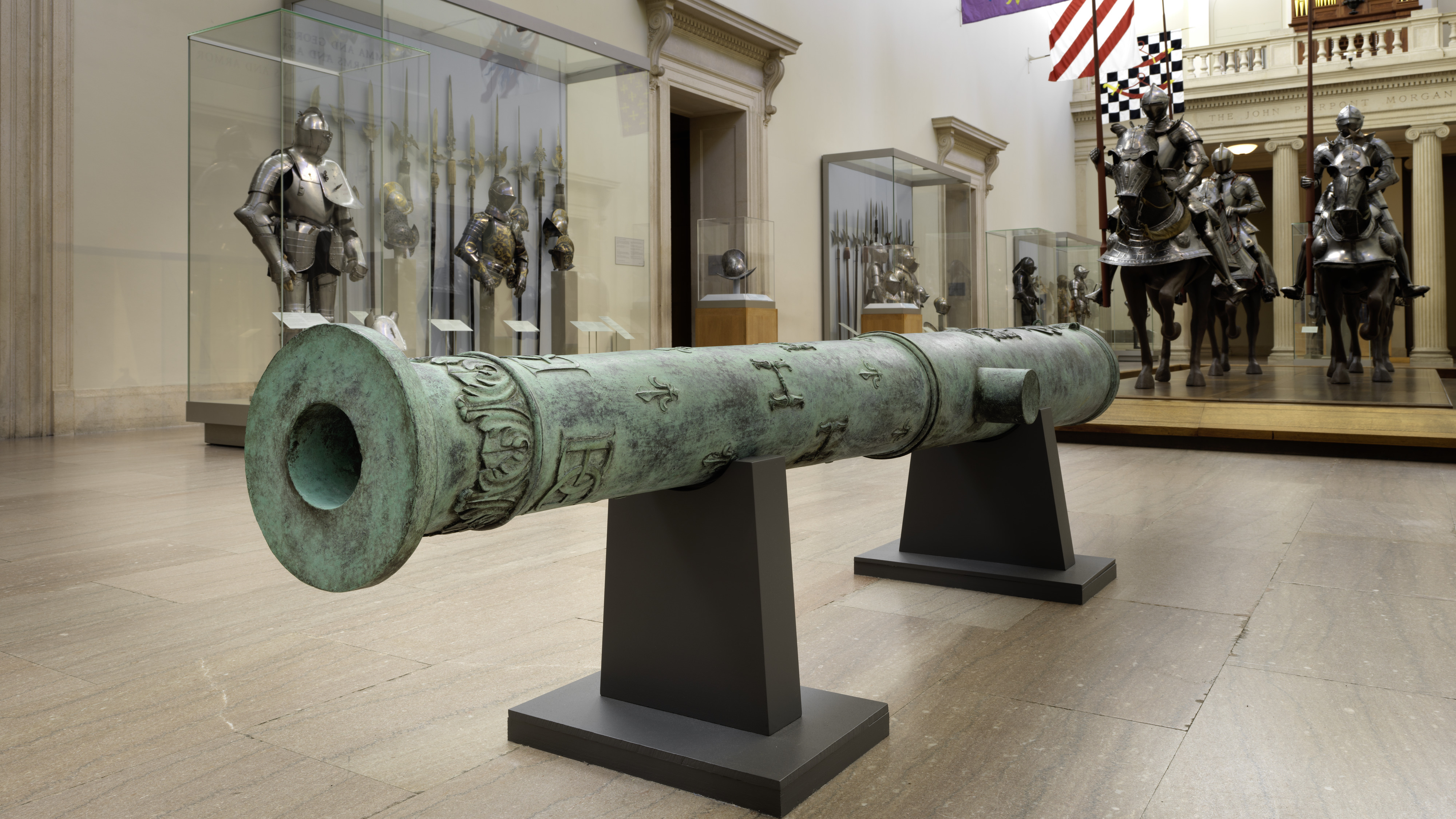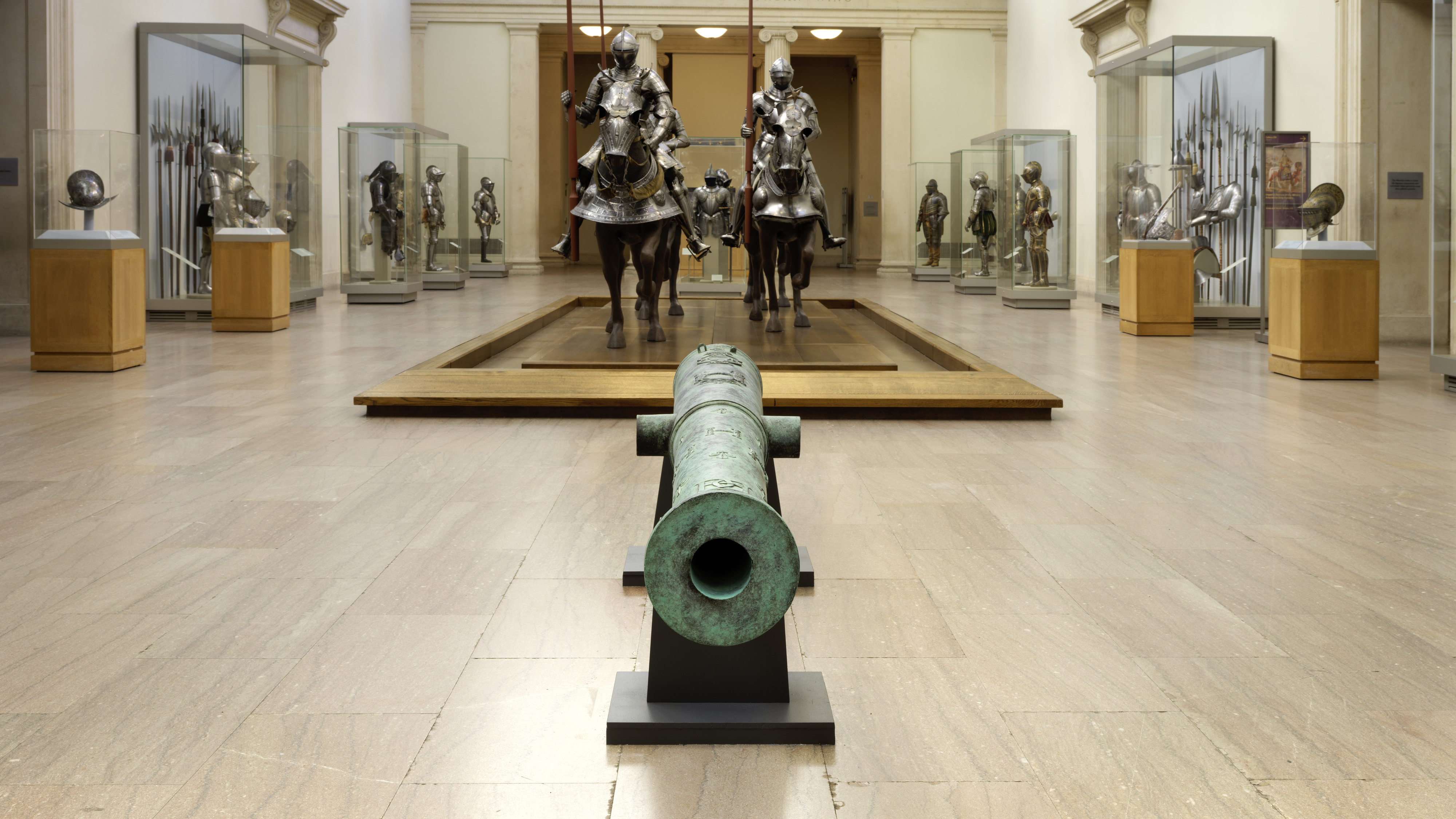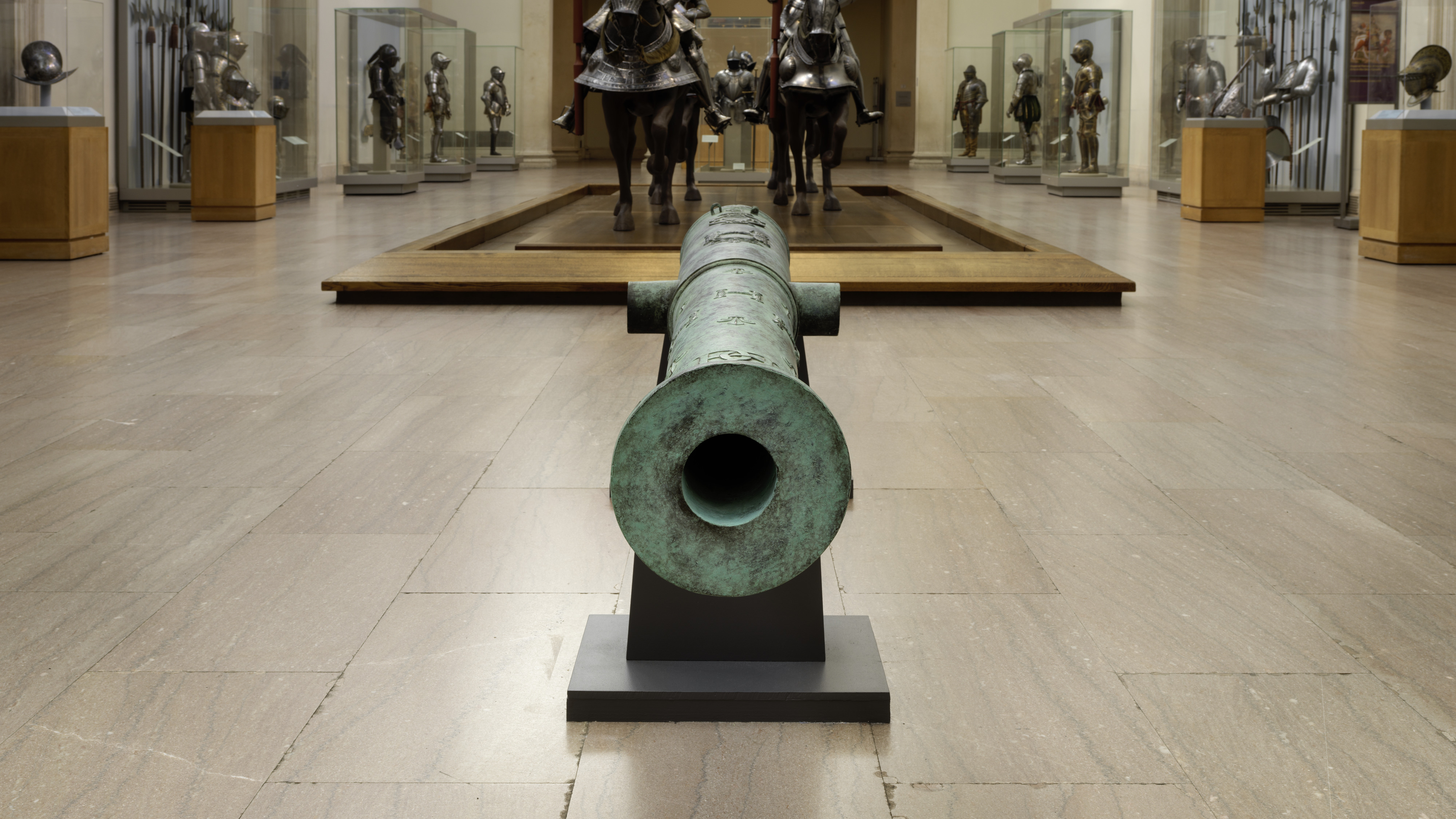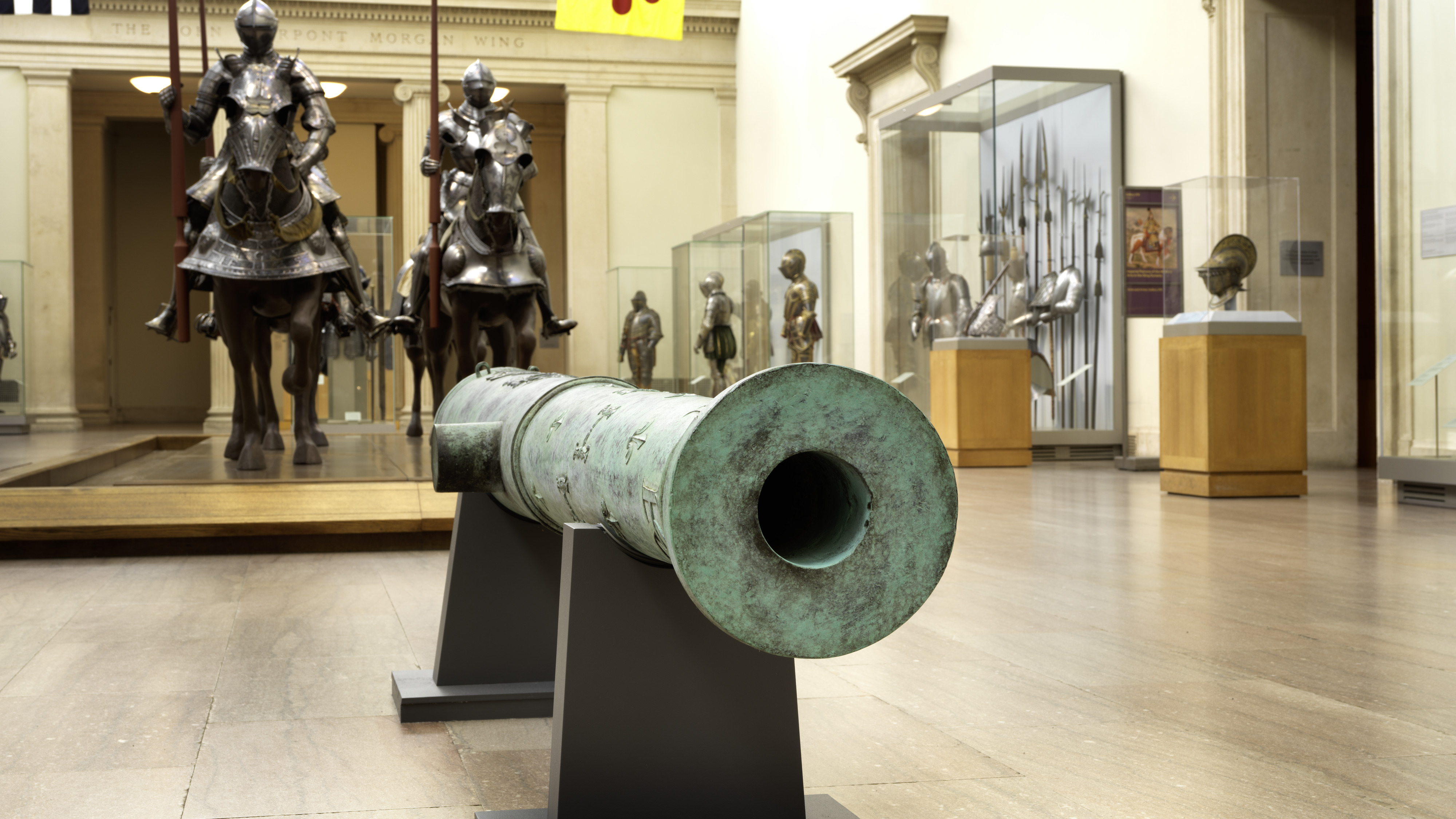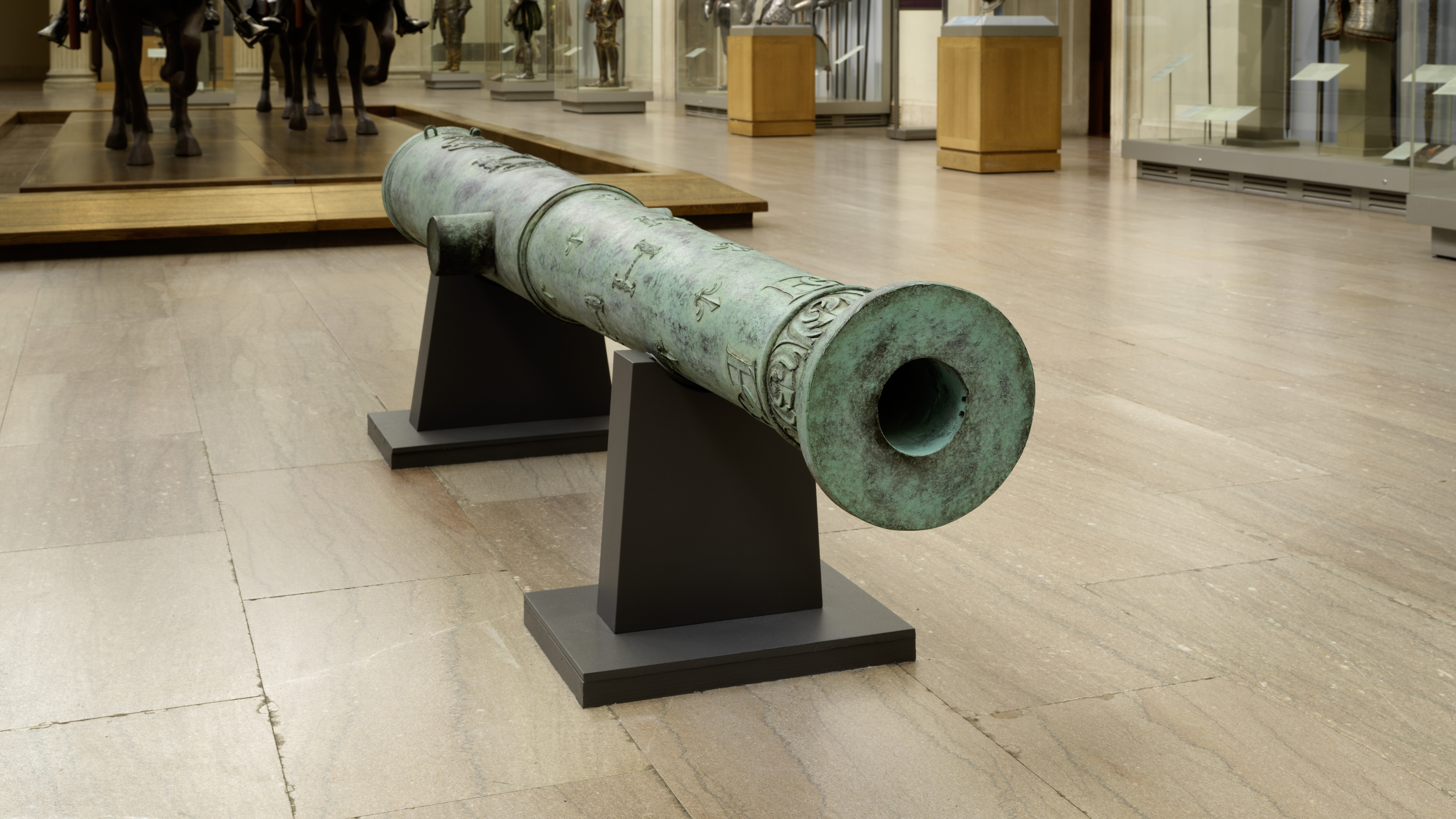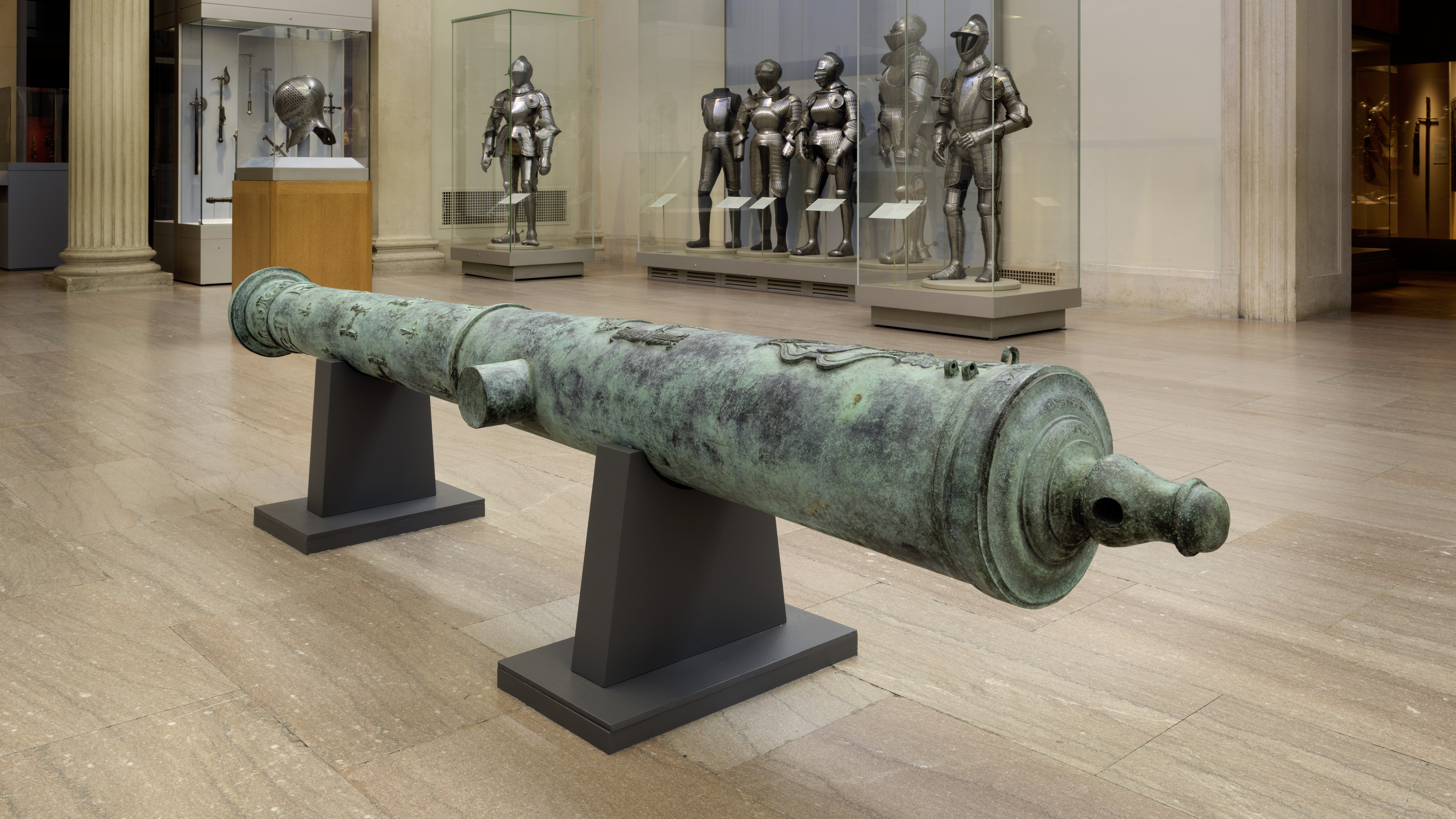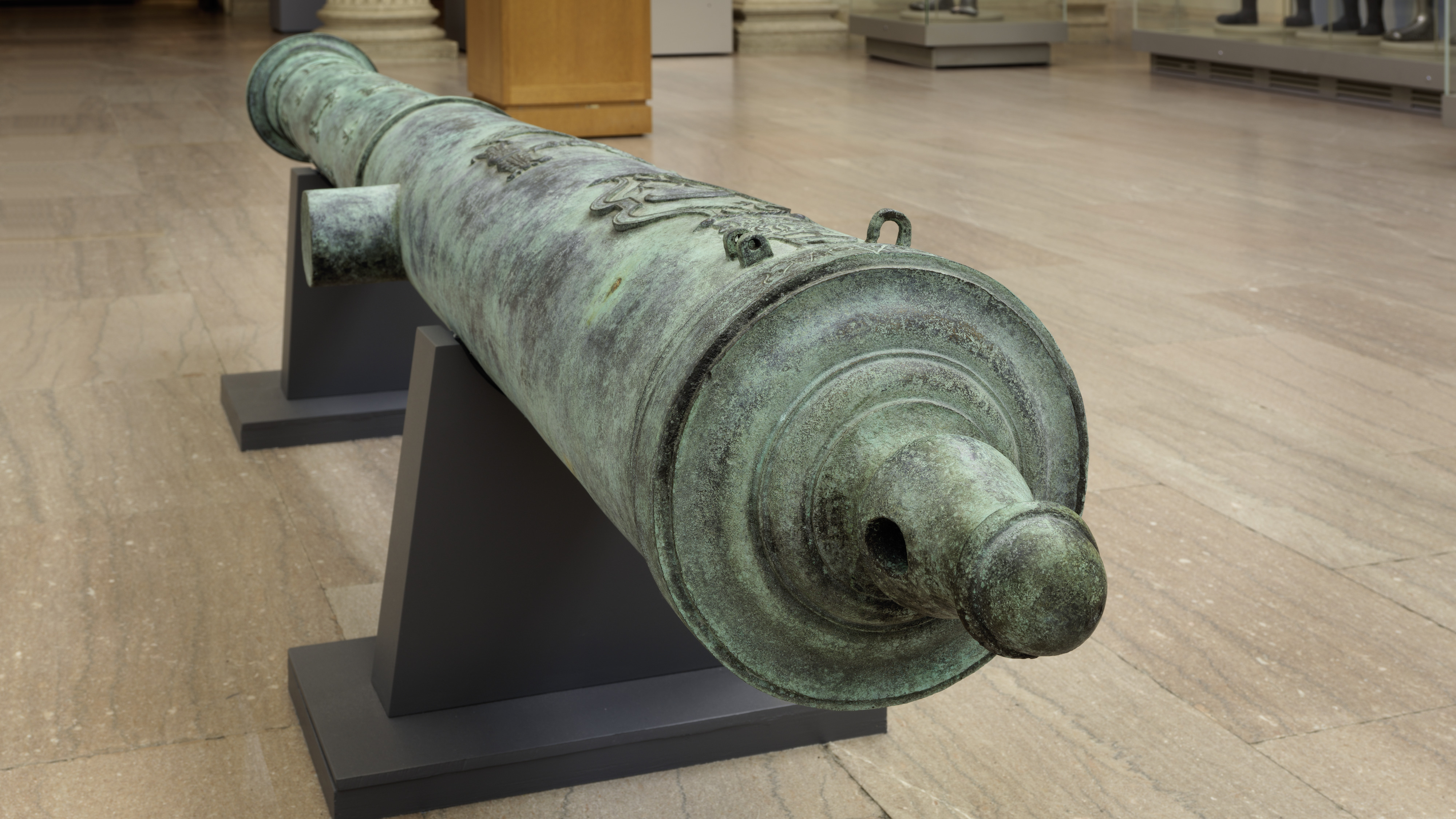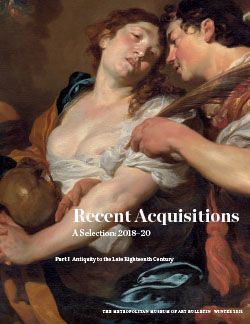Cannon (Bastard Culverin) Made for Henry II, King of France
Cast for Henry II of France (r. 1547–1559), this is one of very few royal pieces of ordnance known to survive from the French Renaissance, and among them it is one of the largest and also most profusely decorated examples. Of a type known as a couleuvrine bâtarde (a bastard culverin), it is the third largest of the six calibers Henry prescribed in 1552 for French royal ordnance.
Beside the quality of execution and its remarkable state of preservation, the striking ornamentation of much of the gun's surface with royal emblems is distinctly French. Marking the apogee of a style that appears to have first emerged under Louis XII (r. 1498–1515), it includes cryptic emblems that were so typical of Renaissance court culture and very much favored in France. As Henry's reign ended in tragedy––the king was fatally wounded in a tournament––and France entered a long a difficult period of unrest and civil war, French royal ordnance would never be as glorious again until Louis XIV's reign (1643–1715).
This image cannot be enlarged, viewed at full screen, or downloaded.
This artwork is meant to be viewed from right to left. Scroll left to view more.
